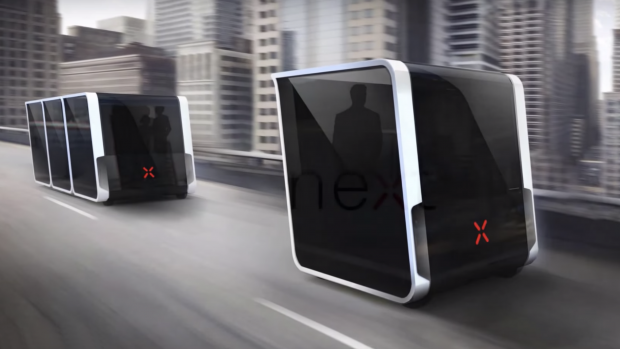EAGER for next-generation transportation solutions

Professor Chow's exploratory research will test the feasibility of using modular self-driving vehicles like the ones represented above. Image source: Next
Professor Joseph Chow, deputy director of NYU Tandon’s C2SMART (Connected Cities with Smart Transportation), has had a long partnership with Next Future Transportation, a company that has developed technology for modular self-driving vehicles that can couple while in motion, providing a transfer-less travel experience for users from door to door without the significant cost of assigning vehicles to individuals. In 2018 C2SMART and Next collaborated on a cyber-physical test bed to test designs, routing algorithms and operational policies, and the following year Next turned to Chow and his grad student Nick Caros to develop a trip-assigning heuristic.
This year, Next offered a letter of support to the National Science Foundation, and Chow and fellow researcher Xiaopeng Li of the University of South Florida were awarded a two-year, $300,000 Early-Concept Grant for Exploratory Research, known by the acronym EAGER and meant to fund work with transformative potential.
Chow and Li’s collaboration is aimed at optimizing autonomous transportation pod-based systems like Next's. As their proposal states, they aim “to test the feasibility of using emerging modular autonomous vehicles (MAV) to make transportation infrastructure capacity ‘elastic’ to bridge the gap between time-varying and spatially continuous travel demand and timely-invariant and spatially-aggregated transportation road infrastructure.”
What that means for the commuter: one could potentially enter an autonomous pod right at the home or office; the pod would then pick up others going in the same initial, general direction before connecting to a "train" of pods on a major conduit. At that point, depending on their destination, commuters might be directed to leave their initial pod and enter another, which would then break off as part of a smaller chain headed to an urban or suburban hub close to their final destination. Finally, a pod would separate to convey the commuter to the exact location of their choosing. This obviates the need for inconvenient transfers and long waits.
The researchers, who state that their project is expected to result in “a new transmodal MAV-based transportation fleet operation paradigm,” will be providing Next with a valuable dataset by which to tune their technology for various urban needs. And if, as intended, MAV service can be boosted from a startup stage to a sustainable industry as a result, the public might soon be finding their commutes smoother, quicker, and less frustrating.




